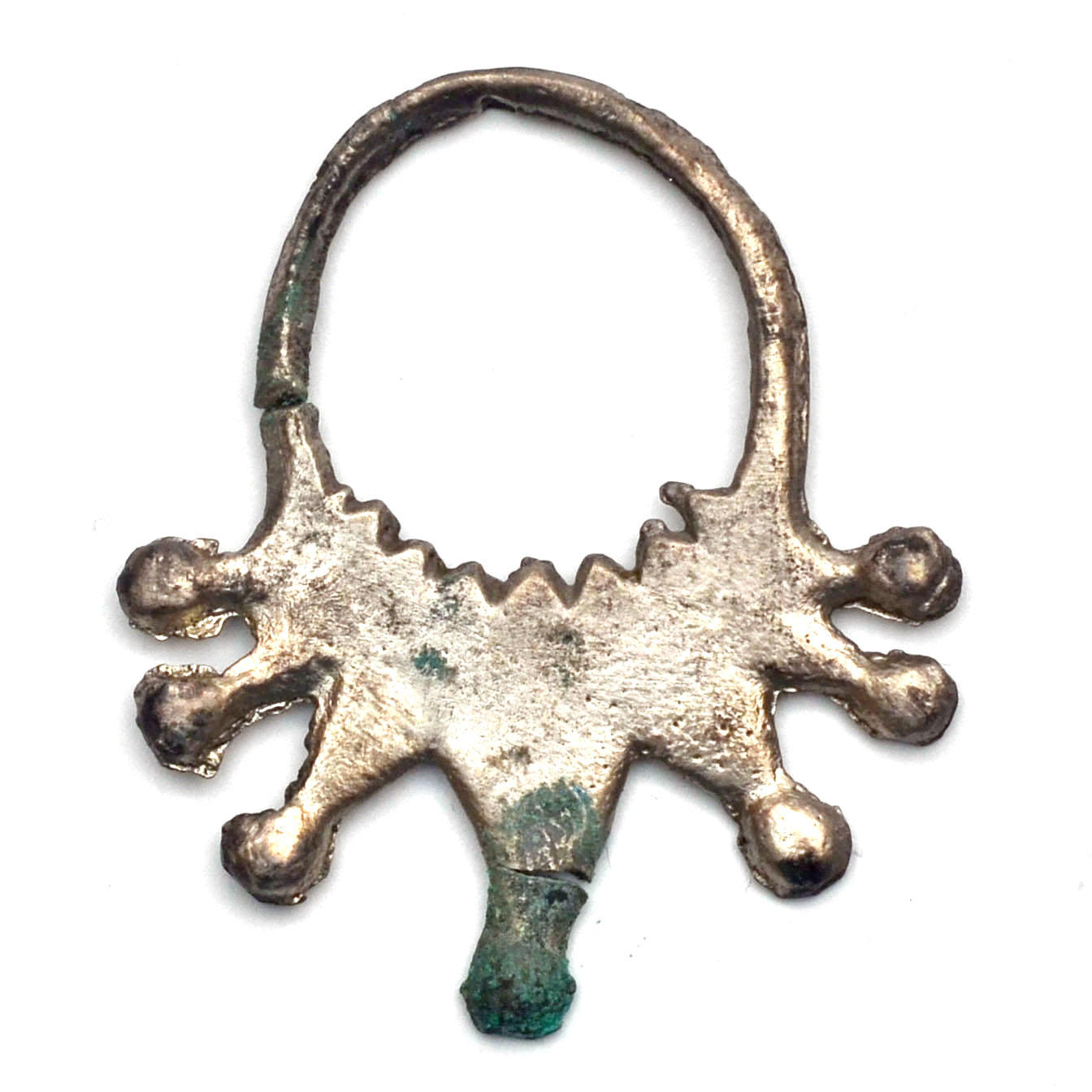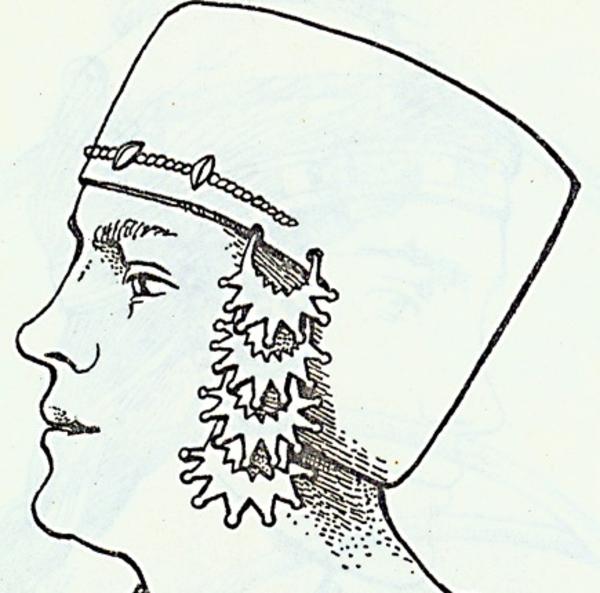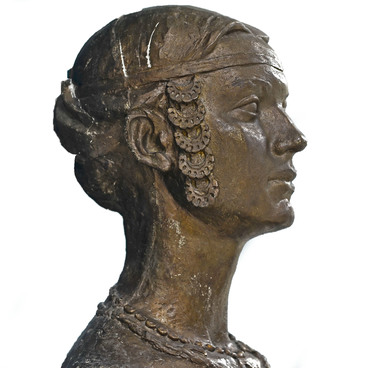Temple rings were one of the most widespread types of jewelry in ancient times. They were generally fixed to the headdress using ribbons or straps. Sometimes they were hooked directly to the headdress fabric, braided into hair or threaded via piercings in earlobes, like earrings. However, such ways of wearing them were less common, and earrings were not widespread among the Slavs: they were worn only by those who were familiar with foreign traditions.
Temple rings
Время создания
11th-13th centuries
Размер
3,2x4,5 cm
Техника
Brass, casting, chasing
Коллекция
Выставка
0
Открыть в приложении#1
Temple rings
#3
#4
Some women wore whole cascades rather than pairs of Temple rings. They were fixed to a ribbon so as to make a long chain that could come all the way down to the shoulders. Rings were sometimes supplemented by small charms, such as bells or coins.
#9
Reconstructed headdress worn by married Radimichian women. Temple rings are attached to the hat.
#5
During the Middle Ages, such type of jewelry was popular in Byzantium and Western Europe, but it was most common among the Slavs. The shape of the rings differed from tribe to tribe. Rings with three beads were worn by the Dregoviches, twisted spirals by the Severians, sickle-shaped ones with tied-up ends by the Kriviches.
Seven-rayed temple rings were preferred by women from Radimichi tribe that lived on the territory of modern Kursk and Bryansk Regions. The first jewelry items of this type were found on Desna river bank in 1886. Since then, archaeologists have been calling this type of rings ‘Desna rings’.
#7
Like most other jewelry items, temple rings were considered to be charms that protected a woman from evil forces, helped her to be happy in her family life and give birth to healthy children. Teenage girls, who were too young to get married, usually did not wear such rings or wore very simple ones made of wire. Young unmarried and married women, by contrast, heavily decorated their headdresses with intricate metal jewelry. The older a woman became, the fewer rings she wore on her temples. Mothers passed down their jewelry to their daughters
#8
Temple rings exhibited in Bryansk Local History Museum are cast from brass, an alloy of copper and tin. They were made between the 11th and 13th centuries. The rings’ outer edges are decorated with seven pointed blades, each of which has a ball on its tip. Their inner edges have seven small triangular-shaped points. The ring’s hoop is not solid, it has an opening, where there might have been a lock or the ring was attached directly to headdress edges.
#10
Bryansk State Regional Ethnography Museum, a State budgetary cultural institution
читать дальшескрыть
00:00
00:00
1x
Temple rings
Время создания
11th-13th centuries
Размер
3,2x4,5 cm
Техника
Brass, casting, chasing
Коллекция
Выставка
0
Открыть в приложении
Поделиться



